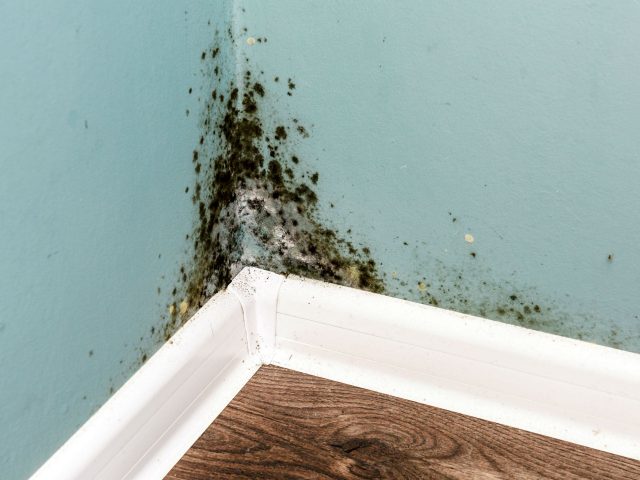In Northeast Florida, where humidity levels run high nearly year-round and storms are common, water damage is more than just an inconvenience—it’s a serious risk factor for mold growth. Whether it’s from heavy rains, hurricanes, or plumbing mishaps, quick action after water exposure is essential to avoid long-term issues.
Why Fast Action Matters in Florida’s Climate
In our warm and humid region, mold can start growing within 24 to 48 hours after water exposure. That’s why it’s crucial to remove standing water, dry all affected areas thoroughly, and disinfect to stop mold before it becomes a serious problem.
Getting professional help from a local team like All Dry Services of Northeast Florida ensures water is completely removed—even from hidden spaces where mold loves to grow. The longer moisture sits, the greater the risk of expensive structural repairs and health hazards.
Understanding Mold and Water Damage in Florida Homes
The Mold Growth Equation
Mold is a fungus that spreads by releasing spores. In Northeast Florida’s subtropical climate, the conditions are almost always ideal for mold:
- Moisture: From leaks, flooding, or coastal humidity
- Food source: Wood, drywall, insulation, dust
- Warm temperatures: Mold thrives between 68–86°F—typical inside most homes here
It only takes a small leak or unnoticed damp spot to start a full-blown mold problem.
Types of Water Damage Common in the Region
- Category 1 (Clean Water): Often from burst pipes or appliance leaks
- Category 2 (Gray Water): Like washing machine overflows or sump pump backups
- Category 3 (Black Water): Includes storm surge, sewage backups, and standing floodwater—particularly relevant in coastal Northeast Florida during hurricane season
All Dry Services technicians are trained to assess these scenarios and act fast, minimizing health risks and property damage.
Immediate Actions to Take After Water Damage
Prioritize Safety
Before anything else, shut off power to affected areas. Use rubber boots, gloves, and an N95 mask when entering water-damaged spaces. Watch out for sagging ceilings and buckling floors, especially in older beachside properties.
Water Removal
Remove standing water as soon as possible. For smaller events, wet/dry vacuums and towels may work. But for widespread flooding—a common issue in places like St. Augustine or Fernandina Beach—call in the pros. All Dry Services uses industrial-grade pumps and extractors to speed up drying time.
Assess Damaged Materials
In our region, high humidity can trap moisture inside:
- Replace porous materials like drywall, carpet, and particleboard that have soaked up water
- Clean and disinfect non-porous surfaces like tile, concrete, and sealed wood
- Inspect under cabinets, inside walls, and crawlspaces, which are especially vulnerable in coastal homes
Drying and Dehumidifying in a Humid Climate
Boost Airflow
Cross-ventilation is essential. Open windows and use fans to move air through the space. Ceiling fans and air movers help circulate air, especially in hard-to-reach areas like attics and crawlspaces (common mold hot spots in Florida homes).
Use the Right Dehumidifiers
In our damp climate, home dehumidifiers may not cut it. Professional-grade machines remove gallons of water from the air per day. Keep indoor humidity between 30–50%, especially in the summer months when the air is thick with moisture.
Cleaning and Disinfecting After Water Damage
Safe Cleaning Tips
- Don’t mix cleaning products (never combine bleach and ammonia)
- Use EPA-approved mold-inhibiting cleaners
- Wear gloves, goggles, and a mask when cleaning
- Properly ventilate the area—use exhaust fans or open windows
If the water came from a black water source like storm surge or sewer backup, call All Dry Services. This kind of contamination is common after heavy Northeast Florida rainstorms and needs professional sanitation.
Mold Prevention Techniques
Use Antimicrobials
After cleaning and drying, apply a mold-inhibiting spray. All Dry Services uses professional-grade antimicrobials that penetrate drywall and wood, offering long-lasting protection in our humid climate.
Upgrade Building Materials
In flood-prone areas like Jacksonville Beach or Green Cove Springs:
- Use mold-resistant drywall
- Opt for tile or vinyl flooring over carpet
- Choose treated lumber in construction or remodels
- Paint with mold-resistant primers in kitchens, bathrooms, and laundry areas
Proper ventilation—especially in tight Florida-style homes—is key. Always vent exhaust fans outdoors, not into the attic or garage.
Long-Term Prevention in Northeast Florida Homes
Perform Regular Inspections
Check plumbing under sinks, look for signs of roof leaks, and inspect around windows for condensation. Our frequent storms mean more opportunities for slow leaks and seepage. Schedule inspections seasonally—especially before and after hurricane season.
Control Humidity Year-Round
Florida’s humidity doesn’t take a break:
- Use bathroom and kitchen exhaust fans
- Install dehumidifiers in basements or garages
- Avoid air-drying laundry indoors
- Invest in smart home humidity sensors to stay ahead of potential issues
Be Ready for Emergencies
Hurricane season runs from June to November, so preparation is a must. Your water damage emergency kit should include:
- Wet/dry vacuum
- Fans and dehumidifiers
- Mold-prevention spray
- Moisture meter
- Contact info for All Dry Services of Northeast Florida
Know where your main water shut-off valve is—it can save you thousands in damage during an emergency.
FAQs: Mold Prevention in Northeast Florida
Q: What’s the best first step after a flood or burst pipe?
A: Shut off water and power, then remove standing water ASAP. Get air moving fast and call All Dry Services if the area is larger than 10 sq ft or includes black water.
Q: How can I tell if mold is starting to grow?
A: Look for a musty smell, dark spots on walls or ceilings, or warping floors. If in doubt, schedule a professional mold inspection.
Q: Is bleach enough to stop mold?
A: Bleach can kill surface mold but doesn’t always reach deep enough into porous materials. EPA-registered mold inhibitors are more effective, especially in Florida’s high-humidity environment.
Q: What can I do to reduce humidity in my home?
A: Use dehumidifiers, especially in summer, and always run ventilation in bathrooms and kitchens. Smart thermostats with humidity controls are great investments in this region.
If you live in Jacksonville, St. Augustine, Palm Coast, or anywhere in Northeast Florida, don’t let water damage turn into a mold disaster. Call All Dry Services for professional water restoration and mold prevention you can trust—because in our climate, a fast and thorough response makes all the difference.

